
We kindly inform you that, as long as the subject affiliation of our 300.000+ articles is in progress, you might get unsufficient or no results on your third level or second level search. In this case, please broaden your search criteria.

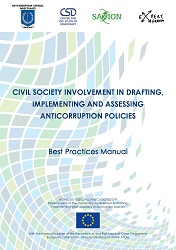
Cooperation between public institutions and civil society organizations (CSOs) is essential for any successful anticorruption strategy. Strengthening the role of CSOs with regard to anticorruption means thinking in terms of a system - how can a corruption system be broken and how is it possible to develop and improve national and local integrity systems (LIS). Transparency and access to information is widely seen as the key to promote greater public sector efficiency and reducing corruption because the information can be monitored by citizens and watchdog organizations. This Best Practices Manual is specifically aimed at strengthening the cooperation between civil society organizations and public institutions with regard to preventing and fighting corruption. It provides a comprehensive account of the selected best practices of cooperation, including their structure, impact, sustainability and lessons learned in countries such as Romania, Bulgaria, The Netherlands and other European Union (EU) and non-EU states. The applicability of these practices is context specific, nevertheless, it is possible to draw a number of valuable generic lessons.
More...
Olgu Karan’s research offers original insights for anyone interested in how and why particular parts of London are now strongly identified with migrants from particular regions of the world.North London’s Green Lanes, a street stretching from Hackney to Haringey, or in local vernacular, from Stoke Newington to Wood Green, has undergone huge transformations over the past 50 years.Turkish Cypriot migrants first came in significant numbers to North London after the 1974 war that displaced hundreds of thousands of both Greek and Turkish Cypriots. They and later Turkish-speaking migrants mainly got jobs in London’s textile manufacturing industry. Those industries largely disappeared in the 1990s.In the 2010s Green Lanes now has several hundred Kurdish and Turkish restaurants and shops. These employ thousands of first, second and third generation Turkey-originating self-employed or family helpers. Karan’s research explains how this massive shift from employed status to self-employed took place. He records the economic devastation brought about by the rapid collapse of the textile industry, arguing this created the struggle for survival that forced thousands into self-employment. Insightfully, Karan also explores the economic basis of this shift. As textile workers, few Turkey-originating migrants had been able to save all the capital they needed to set-up take-away cafes, restaurants or off-licences and general food stores.The book traces the creation of ethnic partnerships and a willingness to provide loans to Imece/Zibare. These are the Turkish and Kurdish names given to village-scale collaborations for harvesting, constructing a water pipeline, providing security for village’s grazing borders with neighbouring villages.
More...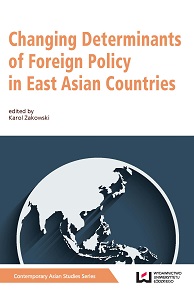
The monograph provides knowledge on the complex nature of both external and internal determinants influencing foreign policies of East Asian countries. Through a range of case studies on Japan, China, Taiwan and North Korea, the authors analyze international relations in East Asia as a mosaic of intertwining processes of globalization and regionalization, interests of global and regional powers, local social and economic conditions, national institutional arrangements, and even personal factors. They argue that sometimes a sudden change of one small element in this mosaic suffices to influence the whole system. Instead of providing a simplified interpretation of the analyzed processes, the monograph tries to illustrate them in their entire complexity.
More...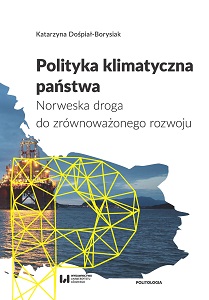
The research assumption of this publication is an in-depth analysis of the process of forming, articulating and implementing the climate policy of Norway. The analysis is aimed at identifying the national conditions of climate action and then examining their translation into the international activity of the state. The choice of Norway was provoked by an interesting question how climate policy is formulated and conducted in a highly developed country, with a consolidated form of democracy and high aspirations in the field of environmental protection, which also has based its development model on oil and gas exports. The analysis of the last three decades of the Norwegian climate policy entitles to the conclusion that the state has managed to combine the roles of the ecological leader and the hydrocarbon exporter. The reflections are focused on showing the political process, determinants, the institutional and legal framework as well as strategies and tools for implementing the adopted objectives of the Norwegian climate policy. The research assumption is to show dependent and independent variables of Norwegian climate policy. The subjects of research are first of all state bodies, but also political parties as well as social organizations and groups (formal and informal). The processual nature of research shows, above all, the evolution of the Norwegian climate policy assumptions over three decades, taking into account their continuity and change. The analysis intentionally covers both political, economic and social ramifications, with the aim to show their complex character, but also to explain the state’s motivation in the international environment.
More...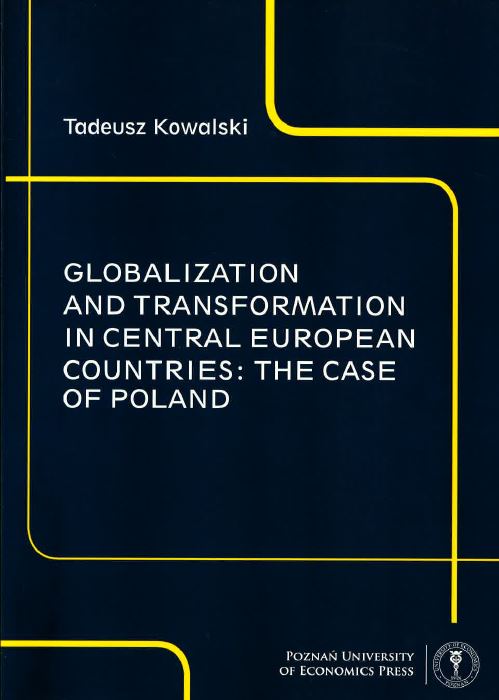
The aim of the book is present and assess the relationship of globalization and market transformation of Poland at the background of development of selected CE and SE countries. The first Chapter identifies and assesses the interplay between liberalization and the course of events in the contemporary globalization stage. The second Chapter is devoted to post WWII economic policy. It shows the economic policy experience and theory available for CECs both at the outset of their market transformation and intellectual climate preceding the economic and financial events that erupted in 2007-2008. The third Chapter reviews and assesses literature on financial crises. On the one hand they stemmed from human errors, on the other their pace of development and scope of contagion they caused should be seen as negative externalities of globalization. Both crises, but in particular the global financial crisis that began in the US in 2007 had harmful consequences for CECs. Following the first three Chapters the aim of the fourth Chapter is an empirical evaluation and comparison of Poland’s economic performance during market transformation against the background of results achieved in the same period, on the one hand by Hungary, the Czech and Slovak Republics and Ukraine, and on the other by SECs. The fifth Chapter, linked with the fourth is devoted to the major institutional aspect of economic transformation: privatization in Poland. The aim of the sixth Chapter is twofold. The first is to empirically assess the macroeconomic performance of the Polish consecutive democratic accountability terms against the background of economic results achieved in CECs and SECs in 1990-2012. The second aim, referring to findings of Chapter three, is empirical evaluation and comparison of economic performance of Poland and CECs and SECs during the Asian and global financial crises.
More...
Reverse flows include several types of flows – raw, material, product, packaging, information, and financial – and therefore they pose a source of different types of values. Reverse flow management includes all activities related to the reverse flows including reverse logistics, effective control of inputs and efforts to reduce reverse flows. The implementation of reverse flowstakes place through internal processes in an enterprise but a substantial part of them occurs within the Supply Chain Management. Interest in reverse flows from practitioners and theorists increased in the 1980s; yet in many models and methods that emerged just in the 1980s and which aim to ensure success (see, e.g., process management models, EFQM, Balanced Score card, etc.) reverse flows were omitted and this situation continues partly until today. Nevertheless, the management of reverse flows is currently considered to be one of the key supply chain management competencies. For some industries reverse flows may even be critical to their competitiveness and success. The perception of the importance and impact of reverse flows on the management and the existence of companies, however, varies considerably among managers. The monograph presents a part of the results of the authors’ empirical research conducted for several years, focused on the attitude of Czech companies to reverse flow management in terms of the perception of a potential value. In addition, it presents a compilation of current knowledge in the field of reverse flow management and value creation within these flows. These findings surely cannot be considered to be a comprehensive summary of the theories, concepts, definitions, etc., as these issues are continuously evolving and involve multiple aspects of management of companies and organizations (including non-profit ones).
More...
This book deals with reverse logistics from the economical point of view. Various types of losses occurring in this business system can diminish the performance of the system, and thus the competitiveness of the whole company. These losses are the main focus of this book. By “losses”, we refer to the effectiveness- and efficiency-related problems. The issue of performance of reverse logistics (especially the barrier and bottle neck identification) has already been addressed in two publications Management of reverse flows, and Specifics of reverse flows management. Effectiveness in reverse flows systems aims to define the research problems of bottle necks restraining the value recovery from reverse flows. Main chapters are organized as follows: Chapter 2 deals with performance tracking of reverse logistics, Chapter 3 elaborates on outsourcing and Chapter 4 deals with the informational systems supporting reverse flows. All research areas combine theoretical knowledge obtained by literature research with empirical findings. Both quantitative study among representatives of the enterprises operating in the Czech Republic, and one enterprise case study were used.
More...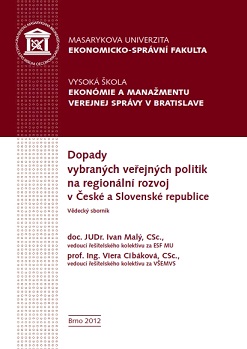
The proceedings include partial results from the second year of the research in both fields, i.e. the public sector and the financial sector. The results were presented at a seminar held in Šlapanice on 24 and 25th November 2011. Compared to the last proceedings, in which the main topic was the public sector, this year’s outputs focused on the financial sector.
More...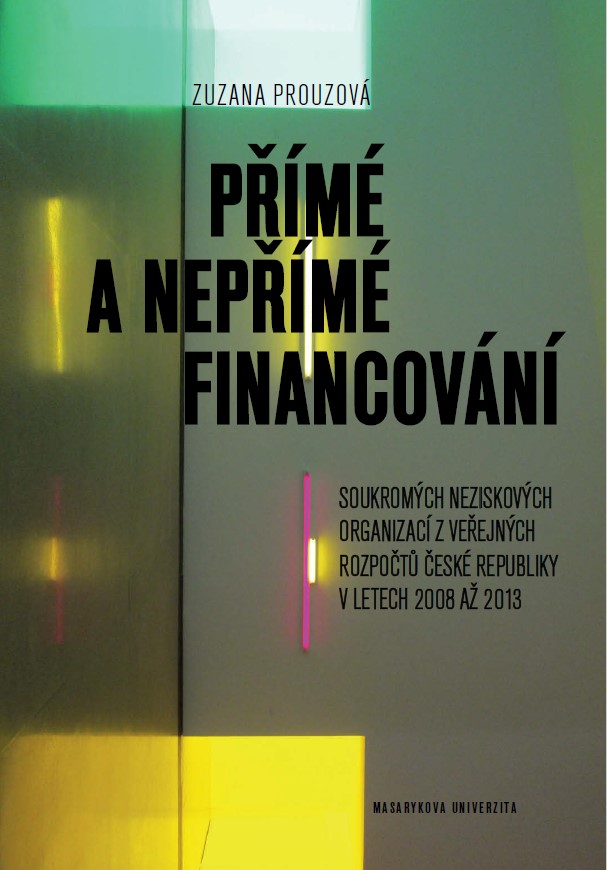
The economic power of non-governmental and non-profit organizations (NGO-NPOs), whether considering the broader or narrower definition of the private non-profit sector, is not very large in comparison with other sectors. The distinguishing characteristic of the non-profit sector is that it exists in areas where common interest is promoted and public services are provided. These areas are less intensive in terms of financial capital, although they depend on human capital. The significance of NPOs lies in activating human capital, generating free voluntary work, creating free non-market production, and producing goods for economically insignificant prices. In 2008–2013, the definition of non-profit organizations developed by the Czech Statistical Office’s Satellite Account of Non profit Institutions (SÚNI) included 13 legal forms. There were 6 legal forms for NGO-NPOs (of which three forms were a mere selection. There were 84,000–127,000 organisations in the Czech Republic in total) for the years 2008–2013. In 2008, there were 66,000 NGO-NPOs. The share of non-profit organizations in GDP (calculated by means of the expenditure method) was 1.6%, in 2008. In 2008–2013, 100,000–105,000 people (full time equivalent) worked for non-profit organisations, i.e. the share in the employment rate was 1.96–2.09 %. Volunteering also played an important role (25,000–27,000 volunteers, full time equivalent).
More...
The publication is a novel study in the field of Polish political science regarding collective representations – a category associated mainly with sociology – from the point of view of a political sphere researcher. The theoretical model adopted by the author has been used to outline and analyze the shapes of collective representations of the peoples of the former Yugoslavia in the difficult period of protracted economic crisis and the accumulation of further political problems. The in-depth diagnosis of ordinary people's feelings about the reality that surrounds them has led to the ascertainment that, over the recent years, rising problems and negative emotions have begun to predominate over optimistic premises, while maintaining stability in the region requires some more determined and well-thought-out actions by the international community. The monograph, written from the perspective of political science and based on qualitative data, combines the elements of other social sciences and humanities, which appeared necessary to explain the interdisciplinary category of collective representations in an integral manner. This broader view of the complicated Balkan region can contribute to improving the knowledge and understanding of it.
More...![Pricing - The New Frontier [Colour interior]](/api/image/getbookcoverimage?id=document_cover-page-image_846377.jpg)
Pricing: The New Frontier by Gábor REKETTYE and Jonathan LIU Published: May 2018 The importance of pricing and price management is growing all over the world, primarily due to the turbulent economic situation, accelerating technological development, the saturation of markets and the globalization of competition. All these trends affect the achievement of company objectives, place prices, pricing and price management in a context that differs greatly from what has been known before. In developing and fast moving economies like India, getting the pricing strategy right is a necessity for the short and long term future of the firm. The pricing decision will impact on the profitability and ultimately on the performance of the firm. Executives and managers responsible making pricing decisions will find this book useful and informative in shedding light on an area that is complicate and complex. – Dr M.K. Nandakumar, Associate Professor of Strategic Management, Indian Institute of Management, Kozhikode, India. Leading technological development across the world requires an in-depth understanding of the impact of the pricing decision and business strategy. This book will give its readers a clear understanding of impact of the pricing decision on the industry, the customer and its competitors. I fully recommend and endorse this book. – Jeff C.K. Lim, BU Deputy CEO at ASM Pacific Technology Ltd. Singapore. Pricing of goods and services is a critical decision that creates immediate competitive advantage. This book explains the principles of pricing clearly and concisely. It seamlessly knits concept and practice. It is a useful text book but also useful to practicing managers charged with challenging task of pricing goods and services. I strongly recommend the book to practitioners and students. – Professor Abby Ghobadian FBAM, FAcSS, CCMI, Professor of Management, Henley Business School, United Kingdom. At a time when almost continuous change is disrupting nearly all industries and the internet is putting ever more power in the hands of the customer, a book that treats pricing with substance and foresight is a welcome addition to the market. – Professor John R. Schermerhorn, Jr., O’Bleness Professor Emeritus, Ohio University, United States In contemporary business pricing is much more than just the money equivalent of the product value. This book provides a high-quality review of different concepts and issues regarding pricing from different stakeholders’ perspectives. It can be recommended both as students’ textbook as well as a managers’ toolkit for making strategic and tactical pricing decisions. – Professor Mirna Leko Šimić, Professor of Marketing at Faculty of Economics at J.J. Strossmayer University of Osijek, Croatia Price is the value that is attached to a product or service and is usually the result of complex set of calculations, research and risk analysis. This book provides comprehensive and understandable strategies and tactics that one may use to price a product or service in our current the multi-faceted operating environment. It is a great resource for both practitioners and academics. – Dr Dolores Rinke, CPA, Professor Emerita, Purdue University, United States In a fast-changing world with fierce competition, pricing has been increasingly the new frontier and battle field for business operations. Dynamic pricing needs to be deployed as the brand new strategy for global organizations to gain competitive advantages and sustainable profit growth. This book provides insightful knowledge of the dynamics of setting price in a networked global context, and enables academics and professionals to have a clear understanding of the principle and practice. – Dr Xinping Shi, Associate Professor of Information and Operations Management, Hong Kong Baptist University, Hong Kong SAR China. Getting the pricing of products and services right is challenging and difficult. It is more complicated in a globalized world and further challenging when it is across different types of economies. This book will offer guidance in setting and negotiating prices for trading across borders and on the digital platform, and will prove useful for practitioners and students. I highly recommend the book. – Professor Vincent XG Qi, PhD, FRAI, Wolfson College, University of Cambridge; Marcel Mauss Chair Distinguished Professor of Global Supply Chain Management and Business Anthropology, Anshan Normal University in China. Contents PART 1. PRICING BASICS Chapter 1. PRICING IN FOCUS Chapter 2. THE ECONOMICS OF PRICING Chapter 3. CUSTOMERS’ PRICE PERCEPTION Chapter 4. PRICES, COSTS AND PROFIT Chapter 5. METHODS OF PRICE SETTING PART 2. STRATEGIES AND TACTICS OF PRICING Chapter 6. PRICING STRATEGY Chapter 7. PRODUCT LIFE CYCLE PRICING Chapter 8. DYNAMIC PRICING Chapter 9. PRODUCT LINES PRICING Chapter 10. PRICE BUNDLING PART 3. INTERMEDIARY PRICING Chapter 11. PRICING ACROSS THE MARKETING CHANNELS Chapter 12. RETAIL AND WHOLESALE PRICING Chapter 13. PRICING IN INTERNATIONAL MARKETS Chapter 14. SUCCESSFUL PRICE NEGOTIATIONS Bibliography Index Product Details: ISBN: 9781910781944 Publisher: Transnational Press London Published: 23 May 2018 Language: English Pages: 320 Interior Ink: Black & white Weight (approx.): 0.65 kg Dimensions (approx.): 18.9cm wide x 24.59cm tall
More...
The concept of this monograph is focused on an analysis of the prospects for improving the competitive position of Asian countries in the global economy. The authors argue that a comprehensive analysis of Asia’s economic development requires studying its business and financial aspects in parallel. The authors of the monography concentrate on the chosen business aspects of Asia’s expansion, such as: trade and value chain development, Asian transnational corporations, international mergers and acquisitions, growth potential of energy industry, GDP growth model.The unique nature of the studies conducted for this book stems from their wide thematic and geographical scope. Consequently, both business and financial features of economic growth are analysed. This approach is further used to study the financial aspects of China’s development in a related book prepared by the authors from the same Department: China’s economic growth: selected financial aspects.According to the opinion expressed by the reviewer the following monograph constitutes a valuable contribution to the discussion concerning the new role of Asian economies in the world. It is recommended to scientists, students and journalist who study the problems of Asia’s economic development and its role in the global economy. The results can be also useful to companies interested in developing their business activities in the countries of the region.
More...
Podstawowym celem opracowania jest zbadanie efektywności fiskalnej podatku dochodowego od osób fizycznych w Polsce w latach 1999–2009. Efektywność w tytule akcentuje konieczność uwzględnienia nie tylko wpływów z podatku, lecz również kosztów jego wymiaru i poboru, na co zwrócił już uwagę autor klasycznych zasad podatkowych A. Smith, formułując postulat taniości opodatkowania. Z kolei efektywność fiskalna wskazuje na profil rozważań, które koncentrują się na wysokości i podziale dochodów z podatku, a do jego funkcji pozafiskalnych nawiązują jedynie w takim zakresie, w jakim wpływają one na wysokość tych dochodów. Dodatkowo rozważania koncentrują się na celach, kryteriach i modelach optymalnego opodatkowania dochodu, stanowiąc wprowadzenie do autorskiego / nowatorskiego modelu optymalnego opodatkowania dochodu z pracy. W rozprawie pominięto optymalne opodatkowanie dochodów z oszczędności. Przesądzające w tym względzie było znaczenie stosunku pracy oraz stosunków pokrewnych jako najbardziej wydajnego źródła dochodów podlegających opodatkowaniu podatkiem dochodowym od osób fizycznych, stanowiących w niektórych latach nawet ponad 60% ogółu dochodu do opodatkowania. Do rozwiązania problemu optymalnego opodatkowania dochodu z pracy zastosowano algorytm genetyczny. Otrzymane wyniki zweryfikowano, porównując je z wynikami prezentowanymi w literaturze, uzyskanymi przy zastosowaniu metod analitycznych i numerycznych. Praca naukowa finansowana ze środków na naukę w latach 2008–2011 jako projekt badawczy nr N N113 117834. The main goal of this study is to examine the fiscal effects of personal income tax in Poland in the years 1999–2009. The dissertation discusses efficiency from a broader perspective, taking into account not only tax revenues, but also the costs of tax calculation and collection. It was already pointed out as necessary by A. Smith, the author of tax rules, when he formulated his postulates of cheap taxation. The following chapters discuss the goals, criteria and models of optimal income taxation, leading to the introduction of the original model of optimal work income taxation. The dissertation does not discuss the optimal taxation of savings income because their share in the taxable income is considered as marginal. It is estimated that income from employment contracts and related accounts for more than 60% of total taxable income. In addition, this study introduces a new method of calculating optimal taxation based on stochastic optimization using a genetic algorithm. It presents the results of the conducted experiments, which gave conclusions qualitatively comparable to those presented in the literature provided by analytical and numerical methods. Research work financed from funds for science in 2008–2011 as research project no. N N113 117834 from Science Council in Poland.
More...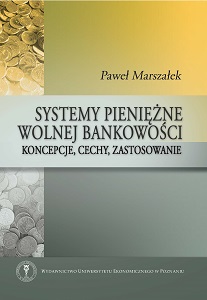
Monografia ma przede wszystkim charakter teoriopoznawczy. Niemniej wątki empiryczne również są w niej obecne. Rozpatrywanym w pracy problemem badawczym jest to, czy i na ile zasadne byłoby zastąpienie istniejących rozwiązań którymś z opisywanych w pracy modeli wolnej bankowości, jako rozwiązaniem bardziej spójnym teoretycznie i lepiej dopasowanym do współczesnych warunków instytucjonalnych. Głównym celem pracy jest pogłębiona charakterystyka współczesnych koncepcji wolnej bankowości oraz ocena zasadności ich ewentualnego zastosowania w praktyce. Cząstkowymi celami pracy są: a) zaproponowanie spójnych kryteriów klasyfikacji systemów pieniężnych; b) charakterystyka cech, elementów, funkcjonowania oraz podstaw teoretycznych współczesnych systemów pieniężnych, ze szczególnym uwzględnieniem samego pieniądza, jego cech i charakteru; c) identyfikacja zjawisk i procesów będących przyczynami zmian w narodowych systemach pieniężnych (ze szczególnym uwzględnieniem finansyzacji) oraz charakterystyka następstw tych zmian dla poszczególnych elementów systemów pieniężnych; d) ocena uwarunkowań wprowadzenia wolnej bankowości; e) porównanie poszczególnych koncepcji współczesnej wolnej bankowości. W pracy postawiono hipotezę, zgodnie z którą systemy wolnej bankowości nie stanowią alternatywy dla systemów bankowości centralnej. W ich konstrukcji tkwią bowiem, często nawet na jeszcze większą skalę, te same błędy i problemy, które powodują niestabilność systemów bankowości centralnej. Hipotezę tę poddano weryfikacji w toku prowadzonych badań. W szczególności zbadano takie zagadnienia, jak: elementy systemu pieniężnego (ze szczególnym uwzględnieniem pieniądza) i ich historyczne kształtowanie się, klasyfikacje i rodzaje systemów pieniężnych, konstrukcję i podłoże teoretyczne współczesnych systemów pieniężnych, najważniejsze procesy i zjawiska wpływające na działanie i kształt tych systemów w ostatnich kilku dekadach, konsekwencje tych zmian, a także formułowane w literaturze koncepcje systemów pieniężnych wolnej bankowości oraz (tam, gdzie było to możliwe) doświadczenia historyczne ich funkcjonowania. Pracę oparto na literaturze – w przeważającym stopniu anglojęzycznej – z takich dziedzin, jak teoria pieniądza, historia myśli ekonomicznej, polityka gospodarcza (w tym zwłaszcza polityka pieniężna), systemy finansowe, bankowość komercyjna i bankowość centralna. Wykorzystano również przepisy prawne i materiały źródłowe. Do badań zastosowano metody analizy opisowej, analizy porównawczej oraz studium przypadku.
More...
In 2016, the major study The Kremlin Playbook: Understanding Russian Influence in Central and Eastern Europe concluded that the Kremlin has developed a pattern of malign economic influence in Europe through the cultivation of “an opaque network of patronage across the region that it uses to influence and direct decision-making.” This network of political and economic connections—an “unvirtuous” cycle of influence— thrives on corruption and the exploitation of governance gaps in key markets and institutions. Ultimately, the aim is to weaken and destroy democratic systems from within. Despite the varied nature of the countries presented in the first volume, the names of specific jurisdictions, companies, and members of Vladimir Putin’s inner circle kept appearing in nearly every network of influence. Was this a coincidence? Or could there be enabling forces that unwittingly or purposely amplify Russian malign economic influence? Exploring the answers to these questions formed the basis of our second report, The Kremlin Playbook 2: The Enablers. Enablers of Russian malign influence allow the Kremlin to achieve its end and avoid some of the consequences of its behavior. By aiding and abetting Russia’s malign influence, enablers assist the Kremlin in self-destructive behavior that siphons funds offshore (often in or through Europe) and depletes the Russian tax base at a time of dire economic conditions. Crucially, by allowing Russian economic influence to cycle through their systems, enablers actively participate in the weakening and discrediting of their own democratic structures. Understanding Russian malign economic influence requires understanding the risks inherent in large Russian investment flows. Because enablers can facilitate or aid illicit financial flows, they jeopardize the integrity of open market economies and, ultimately, create a threat to national security. State-owned enterprises and large companies play an important role in the furtherance of Russian malign economic influence because of their dominant position and ability to distort market competition. The significant amounts of financial flows they oversee make them susceptible to illicit practices or abuse. Enablers can facilitate the integration of illicit funds within legitimate global financial flows, assisted by shell companies and corporate facilitators like banks, attorneys, or accountants. Russian private holdings abroad total an estimated $1 trillion. These significant capital flows create a potential dependence on illicit funds in which the enabler and the Kremlin both benefit from and are dependent on a system that helps these flows transit in and out of Russia and Europe. Illicit finance, particularly money laundering, can damage national security by corrupting government officials who can alter policies, impeding the free flow of capital, reducing the efficacy of sanctions regimes, and distorting entire markets and industries. This link between illicit finance and national security can materialize in two separate channels—public corruption and organized crime—that follow the same track and at times overlap. In the case of Russia, these two flows converge at the behest of the Kremlin. Malign actors hiding funds and profits can do so through money laundering and tax avoidance or evasion. Enabling countries’ developed financial systems move these billions in investment and profits in and out of European countries every year. These financial systems offer specific tools that are designed to obscure the origins of certain investments and conceal illicit financing. Tactics that remove profits from the reach of tax authorities (and thus state revenue) may not be illegal, but some are meant to operate just below the threshold of illegality, where enablers excel—within a financial gray zone. They might be following the letter of the law, but certainly not its spirit, and industries like corporate service providers (CSPs) assist in this task by feeding the enabling ecosystem through complex, cross-border transactions and company constructions. This complex ecosystem has grown exponentially in the past three decades with rapid globalization and Russia’s deep integration within our financial system. It has become almost impossible to disentangle the reported $1 trillion of Russian capital outflows from other financial flows, including for the most capable oversight bodies in the world.
More...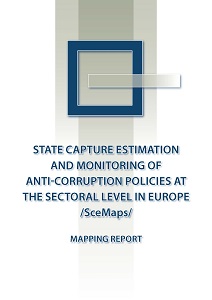
The current report maps the policy, market, institutional, technical and data availability aspects, related to state capture (SC) assessment in three economic sectors (wholesale of solid, liquid and gaseous fuels; wholesale of pharmaceutical goods; and construction) in four European countries (Bulgaria, Italy, Romania, and Spain). The assessment is based on the State Capture Assessment Diagnostics (SCAD) methodology, which describes SC as institutionalization of corruption relations which lead to virtual privatization of governance and thus instead of public goods, the state capture process delivers systematically and permanently private goods to the captors (or privatizers) of the government functions. Processwise, state capture is the abuse of good governance rules (which includes abuse of power) in the process of drafting, adoption and enforcement of the rules themselves (including the laws) in favour of a small number of captors at the expense of society and business at large. SCAD models the abuse efforts by the business through national level indicators which reflect monopolization pressure and ineffectiveness of antimonopoly laws. At the sectoral level, additional indicators are monitored, providing proxies for a privileged status of a given business entity (company), including whether: • it enjoys privileged access to public procurement; • there is legislation or laws enhancing its market position; • it has gained a privileged legal status shielding it from prosecution; or • it receives preferential treatment in getting subsidies (most often, EU funds).
More...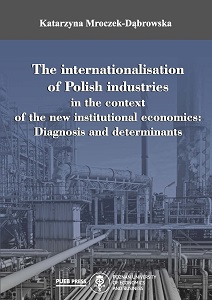
This monograph touches upon the relatively under-researched subject of the process and degree of industry internationalisation. Situated between the micro- and macroeconomic perspectives, the book deals with economic subsystems which are rarely discussed in the international business literature but which constitute a vital pillar of national economics. As Prof. Krzysztof Wach from the Cracow University of Economics emphasises, the book fills a gap in the Polish publishing market not only regarding the idea itself, but also by applying innovative and up-to-date research methods. Additionally, the monograph not only concerns contemporary issues developed within new institutional economics and internationalisation theory, but has a pragmatic, applicative character aimed at expanding the Polish economy. As Prof. Bogusława Drelich-Skulska from the Wrocław University of Economics stresses, the issues discussed have a significant meaning for both developed and developing economies.
More...
This edited volume seeks to address the current issues of trade unions, trade unionism and labour, of its present and of its future. It is divided into three parts: I. Workers’ dilemma - the crisis of the trade union; II. Trade unions and workers: case studies of BiH, Croatia and Serbia and III. Trade unions in the social teachings of the Catholic Church. The book offers sociological, historical, philosophical, and political science and activist views on labour, trade unions and capital. Contributions use case studies, surveys, interviews, content analysis, discourse analysis, and analysis of documents to bring new and relevant findings. The articles also propose some solution models to the current crisis. This collection holds valuable lessons for both union leadership and membership.
More...
Mnogo toga je već napisano o uzrocima i posljedicama zamiranja gradova, kao i o politikama i strategijama planiranja. Međutim, razina kvalitete informacija koje se tiču transnacionalne perspektive nije posebno visoka, s obzirom na to da su dosadašnje studije bile više usredotočene na velike gradove i baratale s empirijskim podacima koji su u drugi plan stavljali kontekstualni utjecaj na lokalnu dinamiku (Wolff, Wiechmann; 2017). Zamirući grad je grad koji je doživio gubitak stanovništva, pad zaposlenosti i društvene probleme koji su simptomi strukturne krize (Martinez-Fernandez; 2012). To pokazuje koliko je proces zamiranja složen te stoga zahtijeva detaljnije objašnjenje čimbenika koji ga potiču. Čini se kako je presudni faktor za napuštanje mjesta prebivališta, ideja kako u njemu za određenu osobu nema perspektive.
More...